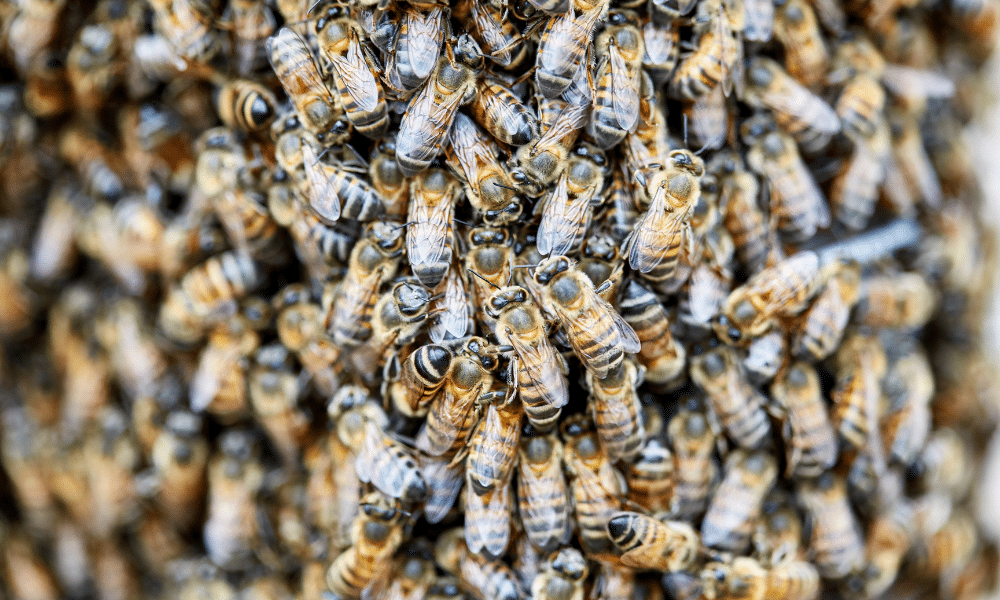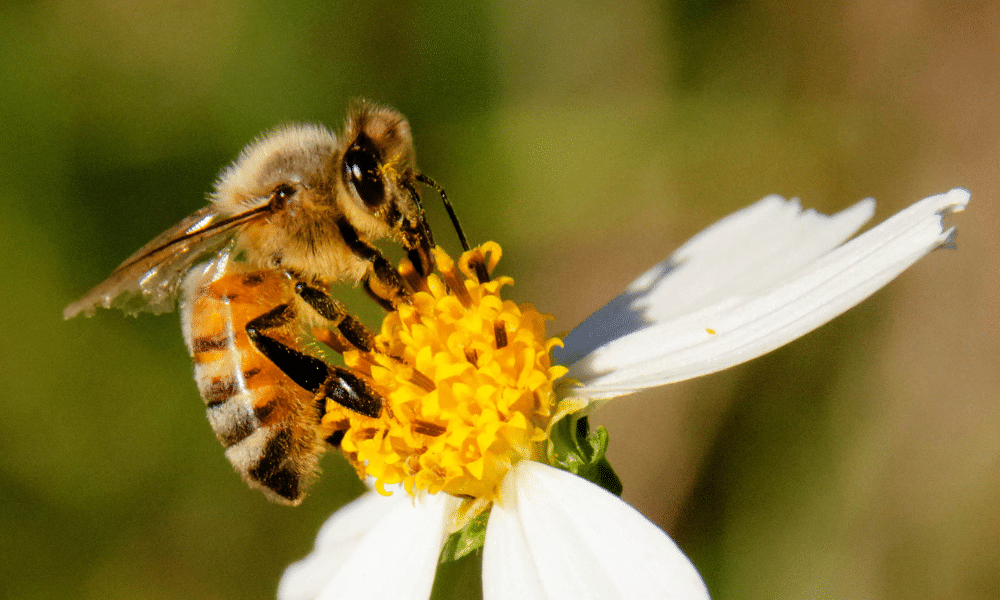Imagine it’s a lovely summer’s day, and you’re out in your garden minding your business as you potter around. The sun warms your skin, lending you a relaxing sensation that all’s well with the world.
It’s a far better image than the dull, grey skies of the winter months. Then comes a buzzing sound, and without warning, you’re being chased by a bee.
First: stop running. Second: don’t flap your arms around in a panic.
All you need to do is walk away calmly and hold your breath as you do so. That’s because a bee navigates by smells and has a good sense of smell once it’s latched on to you.
In Europe, most honeybees will go their merry way once they realise you’ve gone, and you will be pretty safe. It will only sting you if it’s in a panic, such as you’ve sat on the poor thing or caught it with your arm.
Generally, honeybees are not aggressive. They will not actively attack you. However, they will sting if you threaten them or act erratic around them.
There is an exception to this, however. But, more on that shortly…
Do Honeybees Sting?
Yes, a honeybee can sting, or at least the female worker honeybee does.
But it’s unlikely she’ll sting you and more likely that she’ll fly around your head to warn you away, assuming you’re a predator.
Even worse, if she does sting you, she will likely die.
A honeybee stinger is barbed; when injected into the thick skin of a human her abdomen will be ripped apart as she tries to pull away.
The male (drone) does not have a sting, but he’s still likely to dive-bomb any human that is too close to their hive if he’s flying around outside.
A drone honeybee isn’t out and about very much because he feeds from the collected nectar stored in the hive. He’ll venture out when it’s time to seek a mate, but he doesn’t live long, so there aren’t many drone honeybees around.
However, there are many female worker bees around, all busy collecting nectar and pollen from their favourite supply of flowers.
If you are wearing red or black, you’re safer than if you’re wearing blue or yellow. A bee sees in ultraviolet light, and it can’t pick up dark colours, such as black and red, as well as it can with blues, purples, and yellows.
Want to Attract Bees to Your Garden?
We’ve Put Together a Complete Guide to Attracting Bees to Your Garden Including Our Top 14 Plants You NEED to Have in Your Garden:
Do Honeybees Bite?
The humble little honeybee can do many things, such as make honey, and it’s a great pollinator too.
One rarely known fact is that a honeybee is capable of biting.
A honeybee does not have teeth, it has jagged mandibles, and these jaws have special glands. When a bee bites, it will release chemicals in defence.
This is a preferred method of defence against smaller creatures, such as the wax moth, because they’re too small to sting.
It’s very unlikely that a bee will attempt to bite a human. Even if it did, the chemicals wouldn’t be released unless the mandibles have managed to break the skin, which won’t be easy on human flesh.
There is, however, a stingless bee that has quite strong mandibles and when it bites it can lock its jaws for up to half an hour.
This is known as a Trigona hyalinata and lives in tropical heat climes, such as in Brazil.
A bee doesn’t die if it delivers a bite, as it can do when it stings. The chemical released from a bee bite isn’t as toxic as that from a sting, so it’s unlikely to affect a human much beyond a swollen rash.
Which Bees are Aggressive?
This is where we return to our earlier comment of, “the exception to the rule,” over honeybees being aggressive. If you live in America, Mexico, or Texas, then you’ll be familiar with the killer bee (Apis mellifera scutellata).
It is a honeybee but it’s a hybrid of an African and a European honeybee.
This is a small bee that attacks in swarms.

Its aggressive nature comes from the African honeybee. They are hostile by nature because they have many more predators than honeybees elsewhere in the world.
They’ve learned to defend their brooding nests by a quick and decisive method, attack as a large group.
This aptly nicknamed killer bee is spreading throughout America, and is now resident in California, but not yet in Europe. Nor does it like cold climes so unlikely to colonise anywhere that experiences seasonal weather changes.
All species of bees can be aggressive for a short while if they believe their brooding nest is in danger.
But a swarm of killer bees will chase down large intruders, and even wait around for them should they manage to hide. It’s fair to say that the Killer Bee is likened to a honeybee on steroids!
FAQS
Do you have more questions about the aggressiveness of honeybees? Then these FAQs might help:
Yes, honeybees can be friendly. They will go about their business, in your garden, without causing you any harm. They can, however, and understandably, become defensive when needs be.
Honeybees will not go out of their way to act aggressively towards others. Instead, they will become defensive if you act erratically or attack them.







